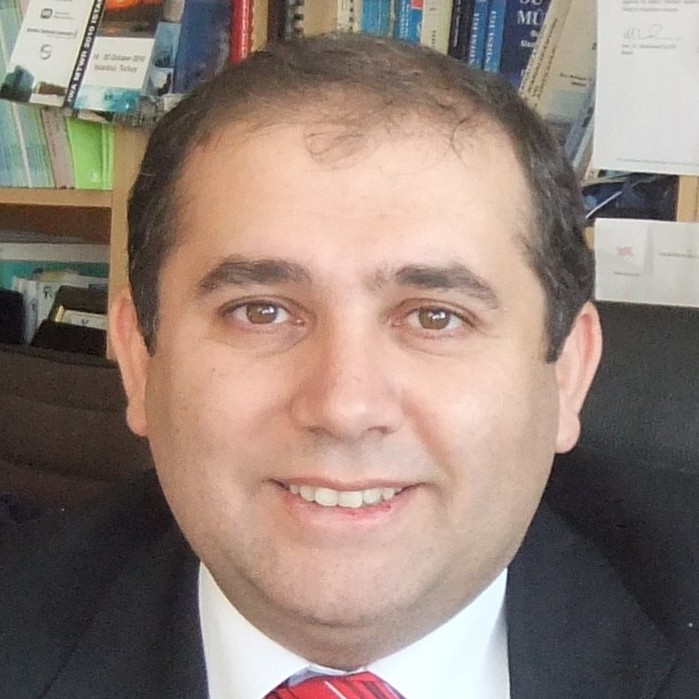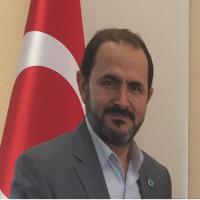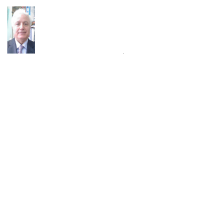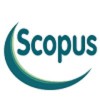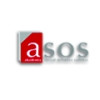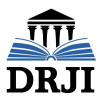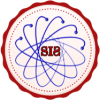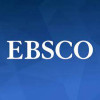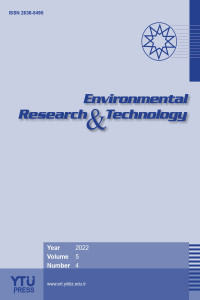Research Article
Review
Conference Paper
Aim & Scope
Environmental Research & Technology is a peer-reviewed, free of charge, International multidisciplinary Journal published by Environmental Engineering Department of Yildiz Technical University, Turkey. The Journal offers complete coverage of environmental issues with original contributions such as Research Articles, Short Communications, Review Papers, Book Reviews, Editorial Discussions, and Conference Papers. Suggestions for Special Issues are also welcomed.
The goal of this journal is to provide a platform for researchers and academicians in order to promote, discuss, and share new issues and developments in various areas of environmental research. The Editorial Board will consider papers for publication based on novelty, impact on environmental problems, and contribution to environmental research advancement.
Topics of interest are including but not limited to;
- Air Pollution
- Water Pollution
- Soil and Land Pollution
- Waste Treatment and Disposal
- Wastewater Treatment and Disposal
- Climate Change
- Global Warming
- Natural Resource Depletion
- Light and Noise Pollution
- Agricultural Pollution
- Public Health Issues
- Loss of Biodiversity
- Ozone Layer Depletion
- Nuclear Issues
Environmental Research & Technology provides an Open Access platform to publish the latest contributions in the field of environmental engineering. The journal has an interdisciplinary and multinational Editorial Board which reflects the composition of the research community the journal will serve. The open access format of the journal will provide the availability of all articles freely, and immediately upon publication.
Some of the important advantages of publishing in Environmental Research & Technology are listed below:
- The journal is open access, means that the articles are accessible to everyone, and free of charge.
- Papers can be submitted at any time, and all submissions are processed immediately with strict deadlines for reviewers, authors, and editors.
- We start with four cycles per year, but hope to increase it in the near future.
- The reviewing process is designed to take three months between the start of the reviewing and final decision.
- The open access format will enables the public to become acquainted with the advance of environmental science and technology.
- The knowledge access through the academia will be accelerated without any limitations.
Author Guidelines
Environmental Research & Technology offers complete coverage of environmental issues with original contributions such as Research Articles, Short Communicaitons, Review Papers, Book Reviews, Editorial Discussions, and Conference Papers.
The entire submission and review process for Environmental Research & Technology will be handled electronically. All papers should be submitted electronically through https://dergipark.org.tr/journal/1368/submission/start.
General Guidelines:
Manuscripts should be submitted in a Word (.doc or .docx) format and should be compiled in the following order: title page; abstract; keywords; main text; references; appendices (as appropriate).
Please provide full names, affiliations, postal addresses, telephone numbers and email addresses of all authors on the cover page of the manuscript, and identify one author as the corresponding author.
Divide your article into clearly defined sections. Any subsection may be given a brief heading. Each heading should appear on its own separate line. Papers should be structured, i.e. they must comprise:
Abstract: No more than 250 words briefly specifying the aims of the work, the main results obtained, and the conclusions drawn.
Keywords: 3–6 keywords (in alphabetical order) which will enable a subsequent information retrieval system to locate the paper.
Introduction: Describing the background of the work and its aims.
Materials and Methods: A brief description of the methods/techniques used (the principles of these methods should not be described if readers can be directed to easily accessible references or standard texts).
Results and Discussion: A clear presentation of experimental results obtained, highlighting any trends or points of interest.
Conclusions: A brief explanation of the significance and implications of the work reported.
Acknowledgements: Collate acknowledgements in a separate section at the end of the article before the references and do not, therefore, include them on the title page, as a footnote to the title or otherwise. List here those individuals who provided help during the research (e.g., providing language help, writing assistance or proof reading the article, etc.).
References: These should be to accessible sources. Please ensure that all work cited in the text is included in the reference list, and that the dates and authors given in the text match those in the reference list. References must always be given in sufficient detail for the reader to locate the work cited (see Guide for Authors document for formats).
Please download the Template for Authors document and prepare your manuscript according to this file. Authors can also use this file as a template for their manuscript.
Publishing fee or changes: This journal assesses no submission fees, no publication fees (article processing charges), or page charges.
Advertisement Policy: Journal of Sustainable Construction Materials and Technologies does not accept advertisements; the journal is sponsored by the Yıldız Technical University. Journal Sustainable Construction Materials and Technologies has no direct marketing policy; the journal is sponsored by the Yıldız Technical University.
Terms of Submission
Papers must be submitted on the understanding that they have not been published elsewhere and are not currently under consideration by another journal or any other publisher. The submitting author is responsible for ensuring that the article's publication has been approved by all the other coauthors. It is also the authors' responsibility to ensure that the articles emanating from a particular institution are submitted with the approval of the necessary institution. Only an acknowledgment from the editorial office officially establishes the date of receipt. Further correspondence and proofs will be sent to the author(s) before publication unless otherwise indicated. It is a condition of submission of a paper that the authors permit editing of the paper for readability. All enquiries concerning the publication of accepted papers should be addressed to jame@yildiz.edu.tr.
Peer Review
Manuscripts submitted to Journal of Sustainable Construction Materials and Technologies will undergo a double-blind peer-review process. Each submission will be reviewed by at least two external, independent peer reviewers who are experts in their field in order to ensure an unbiased evaluation process. The editorial board will invite an external and independent editor to manage the evaluation process of manuscripts submitted by editors or by the editorial board members of the journal. The editor-in-chief is the final authority in the decision-making process for all submissions.
Reviews are typically completed within one month of submission to the journal. Authors will be sent constructive reviewer comments intended to be useful. In general, the instructions, objections, and requests made by the reviewers should be followed. The revised manuscript should clearly and precisely indicate every step taken in accordance with the reviewers' notes. A list of responses and the corrections made to each comment should be provided.
Title and Authorship Information
The following information should be included
Paper title
Full author names
Full institutional mailing addresses
Abstract
The manuscript should contain an abstract. The abstract should be self-contained and citation-free and should not exceed 200 words. An abstract showing the novelty and main findings of the study should be written in the abstract section. The number of keywords should be between 3-5.
Introduction
Journal of Advances Manifacturing Engineering (JEMS) aims to encourage and publish research studies about the challenges and opportunities associated with considerable numbers of understandings in the manifacturing sector. Besides, JAME also aims to reach out to relevant audiences by publishing the latest scientific and technological developments. JEMS journal, is published periodically and regularly. Scope of the journal covers national, international and local studies regarding Manifacturing Engineering, Quality Engineering, Industrial Engineering, Production Engineering, Mechanichal Engineering, Automotive Engineering and Mechatronic Engineering. This section should be succinct, with no subheadings.
Materials and Methods
This part should contain sufficient detail so that all procedures can be repeated. It can be divided into subsections if several methods are described.
Results and Discussion
This section may each be divided by subheadings or may be combined.
Conclusions
This should clearly explain the main conclusions of the work highlighting its importance and relevance.
Articles include Acknowledgments, Data Avability Statement, Author's Contribution, Conflict of Interest, Ethics sections after the conclusion section.
Acknowledgments
All acknowledgments (if any) should be included at the very end of the paper before the references and may include supporting grants, presentations, and so forth.
Data Availability Statement
It is stated that the published publication includes all graphics and data collected or developed during the study.
Author’s Contributions
All authors' contributions to the article are indicated.
Conflict of Interest
Authors must declare that they have no potential conflicts of interest regarding the research, authorship and/or publication of this article.
Ethics
It should be noted that there was no ethical issues in publishing the article.
References
Authors are responsible for ensuring that the information in each reference is complete and accurate. All references must be numbered consecutively and citations of references in text should be identified using numbers in square brackets (e.g., “as discussed by Smith [9]”; “as discussed elsewhere [9, 10]”). All references should be cited within the text; otherwise, these references will be automatically removed.
References style;
Journal Article
E. Hong, A. M. Yeneneh, T. K. Sen, H. M. Ang, and A. Kayaalp, “ANFIS based Modelling of dewatering performance and polymer dose optimization in a wastewater treatment plant,” Journal of Environmental Chemical Engineering, Vol. 6(2), pp. 1957–1968, 2018.
Book
L. M. Jackson, "The psychology of prejudice: From attitudes to social action (2nd ed.)," American Psychological Association, 2019.
R. .M. Sapolsky, "Behave: The biology of humans at our best and worst," Penguin Books, 2017.
Edited Book
E. Hygum, and P.M. Pedersen, (Eds.). "Early childhood education: Values and practices in Denmark," Hans Reitzels Forlag, 2010.
Chapter in an edited book
L. Aron, M. Botella, and T. Lubart, "Culinary arts: Talent and their development.," In R. F. Subotnik, P. Olszewski-Kubilius, and F. C. Worrell (Eds.), The psychology of high performance: Developing human potential into domain-specific talent. American Psychological Association. pp. 345–359, 2019.
Report with Individual Authors References
This page contains reference examples for reports with individual authors.
P. Baral, M. Larsen, and M. Archer, (2019). "Does money grow on trees? Restoration financing in Southeast Asia. Atlantic Council," https://www.atlanticcouncil.org/in-depth-research-reports/report/does-money-grow-on-trees-restoring-financing-in-southeast-asia/
Report by a Government Agency References
This page contains a reference example for a report by a government agency.
National Cancer Institute. (2019). Taking time: Support for people with cancer (NIH Publication No. 18-2059). U.S. Department of Health and Human Services, National Institutes of Health. https://www.cancer.gov/publications/patient-education/takingtime.pdf
Conference Paper in Print
S. Jang, (2019, August 8–11). Deconstructing the opposition of natural/arbitrary in Coleridge’s theory of language [Paper presentation]. NASSR 2019: Romantic Elements, Chicago, IL, United States.
Conference Proceedings
Author Surname, First Initial. Second Initial. (Year). Conference paper title. In Editor First Initial. Editor Surname (Ed.), Proceedings Book Title (pp. page range of paper). Place of Publication: Publisher. Armstrong, D. B., Fogarty, G. J., & Dingsdag, D. (2007). Scales measuring characteristics of small business information systems. In W-G. Tan (Ed.), Proceedings of Research, Relevance and Rigour: Coming of age: 18th Australasian Conference on Information Systems (pp. 163-171). Toowoomba, Australia: University of Southern Queensland.
Thesis
A. A. Author, (date). "Title of doctoral dissertation or master's thesis (Doctoral dissertation or Master's thesis)." Available from Name of database. (Accession or Order No.)
J. C. Pflieger, (2009). "Adolescents' parent and peer relations and romantic outcomes in young adulthood (Doctoral dissertation)." Available from ProQuest Dissertations & Theses Global database. (UMI No. 3371229)
Preparation of Figures
Upon submission of an article, authors are supposed to include all figures and tables in the PDF file of the manuscript. Figures and tables should not be submitted in separate files. If the article is accepted, authors will be asked to provide the source files of the figures. Each figure should be supplied in a separate electronic file. All figures should be cited in the paper in a consecutive order. Figures should be supplied in either vector art formats (Illustrator, EPS, WMF, FreeHand, CorelDraw, PowerPoint, Excel, etc.) or bitmap formats (Photoshop, TIFF, GIF, JPEG, etc.). Bitmap images should be of 300 dpi resolution at least unless the resolution is intentionally set to a lower level for scientific reasons. If a bitmap image has labels, the image and labels should be embedded in separate layers.
Preparation of Tables
Tables should be cited consecutively in the text. Every table must have a descriptive title and if numerical measurements are given, the units should be included in the column heading. Vertical rules should not be used.
Proofs
Corrected proofs must be returned to the publisher within 2-3 days of receipt. The publisher will do everything possible to ensure prompt publication. It will therefore be appreciated if the manuscripts and figures conform from the outset to the style of the journal.
Authorship Criteria
All persons designated as authors should qualify for authorship, and all those who qualify should be listed. Each author should have participated sufficiently in the work to take public responsibility for appropriate portions of the content. One or more authors should take responsibility for the integrity of the work as a whole, from inception to published article.
Authorship credit should be based only on; (1) substantial contributions to conception and design, or acquisition of data, or analysis and interpretation of data, (2) drafting the article or revising it critically for important intellectual content, and (3) final approval of the version to be published. Conditions 1, 2, and 3 must all be met. Acquisition of funding, the collection of data, or general supervision of the research group, by themselves, do not justify authorship. All others who contributed to the work who are not listed as authors should be named in the acknowledgments, and their contribution should be described. Authorship of multicenter trials is attributed to a group. All members of the group who are named as authors should fully meet the above criteria for authorship. Group members who do not meet these criteria should be listed, with their permission, in the acknowledgments. Financial and material support should also be acknowledged.
All statements and opinions expressed in the manuscripts published in Journal of Advances in Manufacturing reflect the views of the author(s). All liability for the advertisements rests with the appropriate organization(s). The Editor-in-Chief, and Kare Publishing do not accept any responsibility for claims made in articles or advertisements.
Copyright Statement
The authors transfer all copyright to the manuscript to the Environmental Research & Technology according to the framework of national and international regulations at the start of the evaluation process. A Copyright Transfer Form signed by the corresponding author must be submitted to the journal with the manuscript. A separate form should be submitted for each manuscript. Manuscripts submitted without a Copyright Transfer Form will not be accepted. After acceptance of the manuscript, all of the authors must complete and sign a Copyright Transfer Form. The authors must affirm that they will not submit the work to another journal, publish it in the original or another language, or allow a third party to use the manuscript without the written permission of the Journal of Advances Manufacturing. In the event that the manuscript is rejected, all copyrights transfer back to the authors. Manuscripts that are declined will not be returned, with the exception of artwork.
Authors retain copyright and grant the journal right of first publication with the work simultaneously licensed under a Creative Commons 4.0 License. When distributing or re-publishing the Work, the Author agrees to credit the Journal as the place of first publication.
All content is the authors’ responsibility. All financial liability and legal responsibility associated with the copyright of submitted tables, figures, and other visual materials protected by national and international laws rest with the authors. The authors take responsibility for any legal proceedings issued against the journal.
To clarify scientific contributions and responsibilities and any conflict of interest issues relevant to the manuscript, all parts of the Authors' Contribution Form must be completed by the corresponding author. Authors' Contribution Form should be included with the manuscript at the time of original submission.
Author names will be published as they are listed on the Copyright Transfer Form. Requests for changes in affiliation or the order of names at a later date cannot be granted to protect all parties involved.
Ethical Principles and Publication Policy
Archiving Policy
Authorship Policy
Complaint and Appeal Policy
Corrections Policy
Ethics Policy
Fee Waiver Policy
Funding Sources Policy
Licenses and Copyright Policy
Open Access Policy
Open Access Statement
Peer Review Policy
Plagiarism Policy
Publication Charges Policy
Retraction Policy
Withdrawal Policy
Archiving Policy
The content published by the Environmental Research and Technology is electronically preserved by using Internet Archive. (https://ert.yildiz.edu.tr/archive) and using LOCKSS.
Authorship Policy
Each individual listed as an author should fulfill the authorship criteria. The authorship should be based on the following 4 criteria:
Substantial contributions to the conception or design of the work, or the acquisition, analysis, or interpretation of data for the work; AND
Drafting the work or revising it critically for important intellectual content; AND
Final approval of the version to be published; AND
Agreement to be accountable for all aspects of the work in ensuring that questions related to the accuracy or integrity of any part of the work are appropriately investigated and resolved.
In addition to being accountable for their own work, authors should have confidence in the integrity of the contributions of their co-authors and each author should be able to identify which co-authors are responsible for other parts of the work.
All of those designated as authors should meet all four criteria for authorship, and all who meet the four criteria should be identified as authors. Those who provided a contribution but do not meet all four criteria should be recognized separately on the title page and in the Acknowledgements section at the conclusion of the manuscript.
The Environmental Research and Technology requires that corresponding authors submit a signed and scanned version of the authorship contribution form during the initial submission process in order to appropriately indicate and observe authorship rights and to prevent ghost or honorary authorship. Please note that the list of authors on the final manuscript will be presented in the order provided on this form. If the editorial board suspects a case of “gift authorship,” the submission will be rejected without further review. As part of the submission of the manuscript, the corresponding author should also send a short statement declaring that they accept all responsibility for authorship during the submission and review stages of the manuscript.
Complaint and Appeal Policy
Appeal and complaint cases are handled within the scope of COPE guidelines by the Editorial Board of the journal. Appeals should be based on the scientific content of the manuscript. The final decision on the appeal and complaint is made by Editor in Chief. An Ombudsperson or the Ethical Editor is assigned to resolve cases that cannot be resolved internally. Authors should get in contact with the Editor in Chief regarding their appeals and complaints via e-mail at kare@karepb.com
Corrections Policy
If the editors or publisher learn from a third party that a published work contains a material error or inaccuracy, the authors must promptly correct or retract the article or provide the journal editors with evidence of the accuracy of the article.
Ethics Policy
The Editorial Board of the Environmental Research and Technology and the Publisher adheres to the principles of the Council of Science Editors (CSE), the Committee on Publication Ethics (COPE), the International Council of Medical Journal Editors (ICMJE), the World Association of Medical Editors (WAME), the US National Library of Medicine (NLM), and the European Association of Science Editors (EASE).
If the submitted manuscript does not include ethics committee approval, it will be reviewed according to COPE's guideline (Guidance for Editors: Research, Audit and Service Evaluations). If the study should have ethical approval, authors will be asked to provide ethical approval in order to proceed the review process. If they cannot provide ethical approval, their manuscript will be rejected and also their institutions and when needed, the related bodies in their country will be informed that such studies must have ethics committee approval. If they provide approval, review of the manuscript will continue.
If the study does not need ethics committee approval after the editorial board’s review, the authors will be asked to provide an ethics committee approval or a document given by a related independent committee that indicates the study does not need ethics committee approval according to the research integrity rules in their country. If the authors provide either an approval or a document showing that ethics approval is not needed, the review process can be continued. If the authors cannot provide either documents, the manuscript may be rejected.
Fee Waiver Policy
There is no fee waiver.
Funding Sources Policy
All authors are required to declare what support they received to carry out their research. Declaring funding sources acknowledges funders’ contributions, fulfills funding requirements, and promotes greater transparency in the research process.
Each author must individually declare all sources of funding received for the research submitted to the journal. This information includes the name of granting agencies, grant numbers, and a description of each funder’s role. If the funder has played no role in the research, this must be stated as well.
Authors are not required to provide the complete list of every single grant that supports them if the grant is not related to the research published.
Licenses and Copyright Policy
Authors publishing with the journal retain the copyright to their work licensed under the Creative Commons Attribution-NonCommercial 4.0 International license (CC BY-NC 4.0) and grant the Publisher non-exclusive commercial right to publish the work. CC BY-NC 4.0 license permits unrestricted, non-commercial use, distribution, and reproduction in any medium, provided the original work is properly cited.
Open Access Policy
The Environmental Research and Technology supports the Budapest Open Access Initiative statement of principles that promotes free access to research literature. The declaration defines open access to academic literature as free availability on the internet, permitting users to read, record, copy, print, search, or link to the full text, examine them for indexing, use them as data for software or other lawful purposes without financial, legal, or technical barriers. Information sharing represents a public good, and is essential to the advancement of science. Therefore, articles published in this journal are available for use by researchers and other readers without permission from the author or the publisher provided that the author and the original source are cited. The articles in the Environmental Research and Technology are accessible through search engines, websites, blogs, and other digital platforms. Additional details on the Budapest Open Access Initiative and their guidelines are available at https://www.budapestopenaccessinitiative.org.
Open Access Policy is based on rules of Budapest Open Access Initiative the Environmental Research and Technology applies the Creative Commons Attribution-NonCommercial 4.0 International (CC BY-NC 4.0) license to articles we publish. If you submit your paper for publication, you agree to have the CC BY-NC 4.0 license applied to your work. Under this Open Access license, you as the author agree that anyone can copy, distribute or reuse the content of your article for non-commercial purposes for free as long as the author and original source are properly cited. The corresponding author must sign the Creative Commons License Agreement after their articles are accepted.
Open Access Statement
The journal is an open access journal and all content is freely available without charge to the user or his/her institution. Except for commercial purposes, users are allowed to read, download, copy, print, search, or link to the full texts of the articles in this journal without asking prior permission from the publisher or the author. This is in accordance with the BOAI definition of open access. The open access articles in the journal are licensed under the terms of the Creative Commons Attribution-NonCommercial 4.0 International (CC BY-NC 4.0) license.
Peer Review Policy
Only those manuscripts approved by its every individual author and that were not published before in or sent to another journal, are accepted for evaluation.
Submitted manuscripts that pass preliminary control are scanned for plagiarism using iThenticate software. After plagiarism check, the eligible ones are evaluated by Editor-in-Chief for their originality, methodology, the importance of the subject covered and compliance with the journal scope. Editor-in-Chief evaluates manuscripts for their scientific content without regard to ethnic origin, gender, sexual orientation, citizenship, religious belief or political philosophy of the authors and ensures a fair double-blind peer review of the selected manuscripts.
The selected manuscripts are sent to at least two national/international referees for evaluation and publication decision is given by Editor-in-Chief upon modification by the authors in accordance with the referees’ claims.
Editor-in-Chief does not allow any conflicts of interest between the authors, editors and reviewers and is responsible for final decision for publication of the manuscripts in the Journal.
Reviewers’ judgments must be objective. Reviewers’ comments on the following aspects are expected while conducting the review.
Does the manuscript contain new and significant information?
Does the abstract clearly and accurately describe the content of the manuscript?
Is the problem significant and concisely stated?
Are the methods described comprehensively?
Are the interpretations and consclusions justified by the results?
Are adequate references made to other Works in the field?
Is the language acceptable?
Reviewers must ensure that all the information related to submitted manuscripts is kept as confidential and must report to the editor if they are aware of copyright infringement and plagiarism on the author’s side.
A reviewer who feels unqualified to review the topic of a manuscript or knows that its prompt review will be impossible should notify the editor and excuse himself from the review process.
The editor informs the reviewers that the manuscripts are confidential information and that this is a privileged interaction. The reviewers and editorial board cannot discuss the manuscripts with other persons. The anonymity of the referees is important.
Plagiarism Policy
All submissions are screened using similarity detection software at least two times: on submission and after completing revisions. In the event of alleged or suspected research misconduct, e.g., plagiarism, citation manipulation, or data falsification/fabrication, the editorial board will follow and act in accordance with COPE guidelines. Plagiarism, including self-plagiarism, that is identified at any stage will result in rejection of the manuscript.
Publication Charges Policy
The Environmental Research and Technology assesses no submission fees, publication fees, or page charges.
Retraction Policy
The publisher will take all appropriate measures to modify the article in question, in close cooperation with the editors, in cases of alleged or proven scientific misconduct, fraudulent publication, or plagiarism. This includes the prompt publication of an erratum, disclosure, or retraction of the affected work in the most severe case. Together with the editors, the publisher will take reasonable steps to detect and prevent the publication of articles in which research misconduct occurs and will under no circumstances promote or knowingly allow such abuse to occur.
Withdrawal Policy
The Environmental Research and Technology is committed to providing high quality articles and uphold the publication ethics to advance the intellectual agenda of science. We expect our authors to comply with, best practice in publication ethics as well as in quality of their articles.
Withdrawal of a manuscript will be permitted only for the most compelling and unavoidable reasons. For withdrawal of a manuscript authors need to submit an "Article withdrawal Form", signed by all authors mentioning the reason for withdrawal to the Editorial Office. Authors must not assume that their manuscript has been withdrawn until they have received appropriate notification to this effect from the editorial office.
In a case where a manuscript has taken more than five months’ time for review process, that allows the author to withdraw manuscript.
Manuscript withdrawal penalty: After receiving the Article withdrawal Form, the Environmental Research and Technology Editorial Board will investigate the reason of withdrawal.
If the reason finds to be acceptable, the author is allowed to withdraw the manuscript without any withdrawal penalty. If not the Environmental Research and Technology will not accept any manuscripts from the same author for one year.
Important notes: Manuscripts may be withdrawn at any stage of review and publication process by submitting a request to the editorial office. Manuscript withdrawal will be permitted after submission only for the most compelling and unavoidable reasons.
If the author wants to withdraw a manuscript, the author needs to submit a completed "Article withdrawal Form", signed by all authors of the manuscript stating the reasons for manuscript withdrawal.
The manuscript will not be withdrawn from publication process until a completed, signed form is received by the editorial office. Authors must not assume that their manuscript has been withdrawn until they have received appropriate notification to this effect from the Environmental Research and Technology editorial office.
Price Policy
None.
Indexes
Citation Indexes
Other Indexes
Journal Boards
Scientific Director

Editor in Chief


Assistant Editor

Language Editor

Co-Editors (Air Pollution)

Co-Editors (Environmental Engineering and Sustainable Solutions)



Co-Editors (Water and Wastewater Management)



Editorial Board



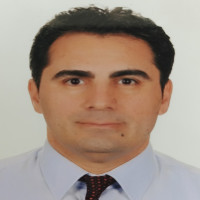


 Web
Web
